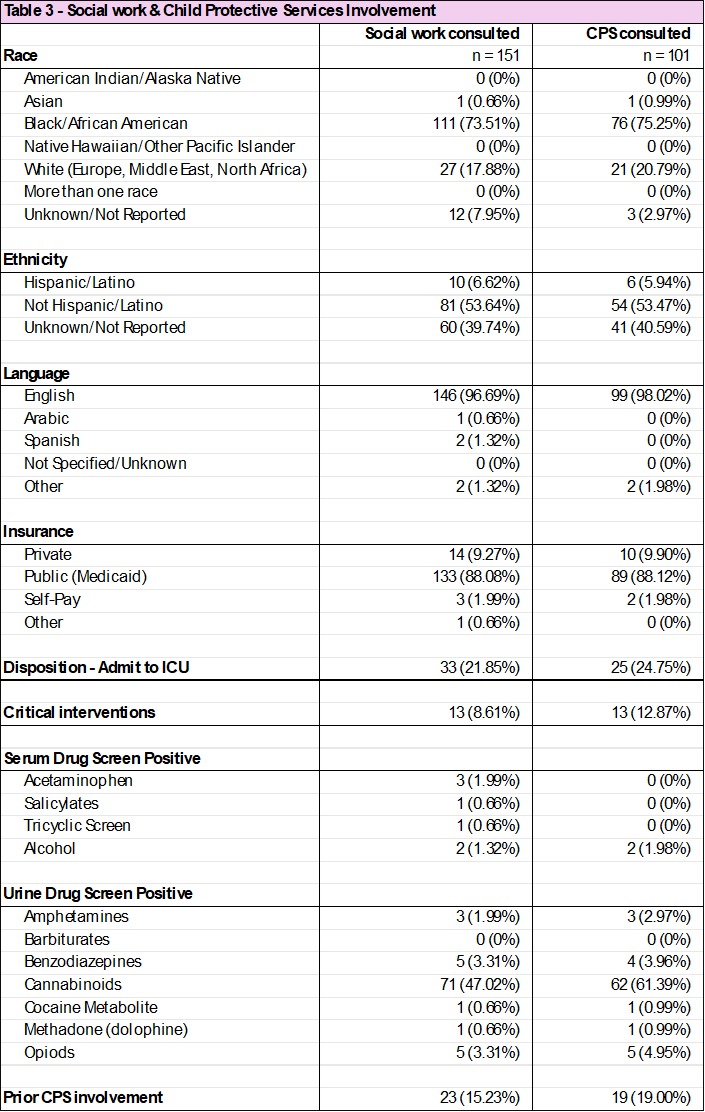Emergency Medicine 12
Session: Emergency Medicine 12
538 - Disparities in Child Protective Service Utilization in Suspected Accidental Toxicological Pediatric Ingestions in the Pediatric Emergency Department
Monday, April 28, 2025
7:00am - 9:15am HST
Publication Number: 538.4164
Joshua Kim, Children's Hospital of Michigan, Lansing, MI, United States; Ahmad Farooqi, Central Michigan University College of Medicine, Detroit, MI, United States; Kelly Levasseur, Children's Hospital of Michigan, Detroit, MI, United States; Amy Delaroche, Children's Hospital of Michigan, Detroit, MI, United States; Priya Spencer, Wayne State University School of Medicine, Detroit, MI, United States

Joshua Kim, DO (he/him/his)
Pediatric Emergency Medicine Fellow PGY6
Children's Hospital of Michigan
Lansing, Michigan, United States
Presenting Author(s)
Background: Accidental pediatric ingestions commonly present to the pediatric emergency department (ED). The majority of ingestions involving young children are unintentional; however, accidental toxicological ingestions may place children at risk of harm. Social work (SW) and child protective services (CPS) support emergency department (ED) providers in assessing child safety. Yet, the involvement of these professionals may be biased.
Objective: We aim to characterize accidental toxicological ingestions among children < 5 years of age presenting to the ED and explore potential disparities in SW involvement and CPS reporting.
Design/Methods: Retrospective chart review including patients ≤5 years of age cared for between January 1, 2021 and December 31, 2023 at an academic urban pediatric ED with full time SW support. Potentially eligible records were identified using International Classification of Disease (ICD) diagnostic codes for ingestion . Poisonings that would not generally require SW assessment (e.g iatrogenic medication errors) were excluded. Demographics, social history, and clinical care was retrospectively abstracted from the medical record . The data was summarized and reported with categorical variables by numbers and percentages.
Results: A total of 569 cases were included. Half were male (53%) and most were African American (61.5%). Household products were most commonly ingested (35%), followed by over the counter medications (24.6%), prescription non-narcotic/sedative medications (17.8%), and marijuana (14%). The majority of patients were asymptomatic in the ED (62%), but 7% were critical with 2.3% requiring life saving interventions. Overall, SW was involved in 26.5% of cases and CPS was contacted in 17.8% of cases. There were no disparities related to race, ethnicity, language, or insurance noted in the involvement of either SW or CPS for the patients cared for in our setting.
Conclusion(s): The majority of young children presenting to the ED following an accidental ingestion are asymptomatic and SW or CPS are not involved in their care. The were no demographic disparities noted in the involvement of SW or CPS but additional work is needed to assess the role of SW and CPS by ingestion type and ingestion severity to aid ED providers in standardizing care for young children potentially at risk for harm.
Table 1
.png) Demographics
DemographicsTable 2
.png) Clinical Features
Clinical FeaturesCritical Interventions includes: Endotracheal Intubation, Cardiopulmonary Resuscitation, or Extracorporeal membrane oxygenation
Table 3
 Social work and child protective services involvement in relation to demographic and clinical features
Social work and child protective services involvement in relation to demographic and clinical features
